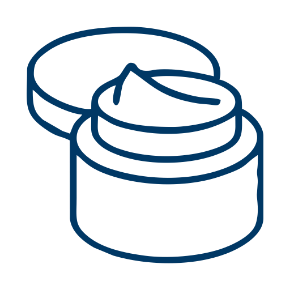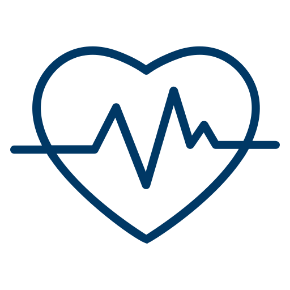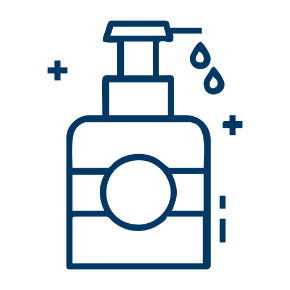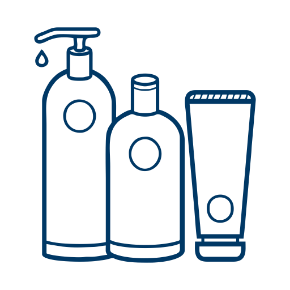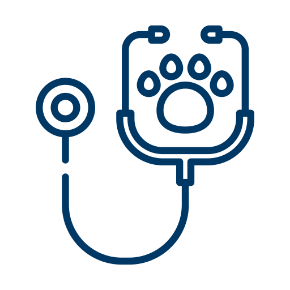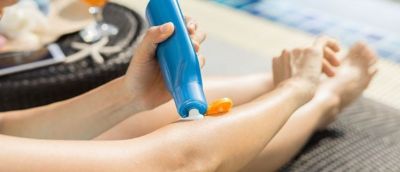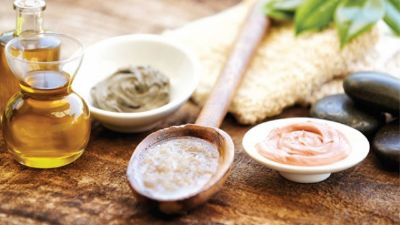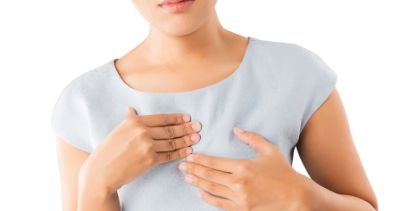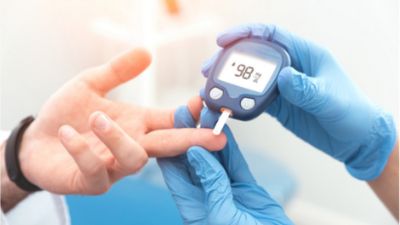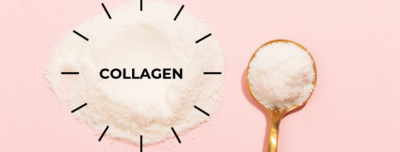Sunscreen may not be the flashiest part of your skincare routine, but it is a high performer, delaying the formation of wrinkles, dark spots and other signs of aging while also protecting you from developing skin cancer. With all the good that sun care does, it should be a no-brainer to wear sunscreen every day. Except many of us do not.
If greasy skin or stinging eyes are causing you to skip your SPF, you are not using the right formula. Read on to discover how to choose the best sport sunscreen for you, the difference between sport and regular sunscreen and how much sunscreen to apply when you have got a good sweat going on.
How does sunscreen work?
Before you understand how sunscreen works and what SPF is, you need to understand why you need to protect your skin. Ultraviolet radiation (UV rays) from the sun hits skin at wavelengths ranging from 290 to 400 nanometres. These rays expose skin to both UVA, which causes damage like collagen breakdown, skin cancer, and UVB, which causes sunburns. Without a broad-spectrum sunscreen lotion (which protects from both UVA and UVB rays), the energy from the radiation goes into the fat and proteins in your skin. This generates free radicals that attack your cellular machinery. In the short term, this damage triggers an inflammatory response such as sunburn. In the long term, the radiation can introduce mutations in your skin cells’ DNA. If these mutations get passed along, they create cancer cells.
The simple fix is to wear sunscreen. There are many ingredients in sunscreens, but the active ingredients mainly fit into two groups: mineral and chemical:
- Mineral sunscreens that contain physical filters (such as zinc oxide and titanium dioxide) achieve their sun protection factor (SPF) by physically blocking the UV rays from penetrating the skin. To put it simply, they act as a mirror to create a barrier between the skin and the UV rays that directly reflects them from the skin.
- Chemical filters (such as octocrylene or avobenzone) protect skin by absorbing UV rays. Instead of deflecting the UV rays, chemical filters work like a sponge and absorb them and transform the energy into heat.
How to apply sunscreen?
Dermatologists recommend the use of a broad-spectrum sunscreen (protects from UVA and UVB rays) with an SPF of 30 or higher. The best practice is to apply your sunscreen 15 to 30 minutes prior to venturing outside to allow the sunscreen to bind to your skin. If you are planning on exposing a lot of skin (if you’re going to wear a swimsuit or running shorts and a tank, for example), apply the sunscreen while you’re naked. This will help ensure you get complete coverage.
How long does sunscreen last?
If you are outside and wondering how often to reapply sunscreen, the benchmark is every two hours—which means if you’re marathon training or planning on running or biking for longer than two hours, bring some sunscreen along. It is two hours because that’s when the sunscreen’s SPF value is fully effective. In other words, after two hours, your sunscreen is not entirely doing its job anymore.
How to choose the best sunscreen when practising sports?
The whole point of working out is to get a good sweat going, but perspiration and sunscreen do not always mix. Formulas that are not designed for sports can ball up, sting your eyes and leave your skin covered in white streaks once they are combined with sweat. The best sunscreen for sports features an oil-free, water-resistant, and fragrance-free formula to prevent stinging. Apply your sport sunscreen at least 30 minutes before heading outside to allow it to fully absorb and to be sure you do not skip any areas.
What is the difference between sport sunscreen and regular sunscreen?
There is no standardized test that verifies whether a certain type of sunscreen is better for certain activities; however, sunscreen that’s qualified as water-resistant for 80 minutes is the best for outdoor workouts. Unlike regular sunscreen, water-resistant sunscreens continue to protect the skin when wet. Water resistance testing involves having subjects apply sunscreen to the skin and immerse the area in water. After, their skin is tested to be sure the sunscreen is still effective. Water resistance of 80 minutes means that the sunscreen will continue to provide the labelled SPF for 80 minutes of continuous water immersion like swimming or sweating.

